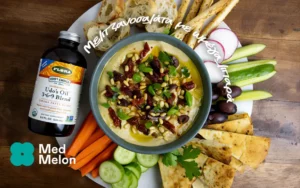Scientific Names: Stevia rebaudiana (BERT.) HEMSL. [Fam. Asteraceae]
Forms:
Stevia leaf, dried and powdered; liquid or powdered extracts; stevioside extract
Traditional Usage:
– Alternative Sweetener (to sugar and artificial sweeteners)
– Anticariogenic (prevents tooth cavities)
– Antihyperglycemic
– Antiviral
– Blood Sugar Control Diseases
– Hyperglycemia
– Natural Alternative Sweetener
– Sweetener
– Tooth Decay Prevention
– Vascular Disorders
– Vascular Tension
– Yeast Infection (prevention)
Overview:
Stevia, Stevia rebaudiana (BERT.) HEMSL. [Fam. Asteraceae], also known as sweet-leaf or honey-leaf, has been used for centuries as a sweetener by the people of South America. The leaf stevioside extract has also been used for many years in the treatment of blood sugar control problems among aboriginals in Paraguay and Brazil. The sweetness of stevia is due to eight glycosides, including stevioside, the most abundant of these that is over 200 times sweeter than sucrose. Recent studies show that stevioside and steviol from the leaves of stevia stimulate insulin secretion via a direct action on beta cells. Briefly stated, stevia sweetens with almost zero calories, does not encourage cavities or yeast infections, is non-glycemic and moreover is actually anti-hyperglycemic for potentially treating blood sugar control diseases, and also reduces vascular tension based on a human double-blind, placebo-controlled clinical trial. These properties would seem to make it a logical natural alternative to artificial sweeteners and sugar. Unfortunately, fears over toxicity (as yet unsubstantiated in vivo) and regulatory red tape have prevented stevia and stevioside extracts from being approved as natural sweeteners. In Canada and the United States, consumers can purchase stevia leaf at health food stores as herbal or dietary supplements, and can buy products containing stevia leaf, however, stevia and stevioside are not approved for sale as natural sweeteners. In contrast, the Japanese government has approved stevia as a natural sweetener for national health reasons and since the 1980’s tons of stevia extract has been consumed each year in Japan, including in processed foods like ice cream and beverages. Several other countries have embraced stevia as well, without a single report of negative health effects. In fact, positive health claims for stevia abound. Recent studies show that hot water extracts from stevia inhibit the replication of human rotaviruses invitro.
Active Ingredients:
Stevia leaf contains: Approximately 6.3% ash; ascorbic acid; austroinulin; 5.4% calcium; beta-carotene; chromium; cobalt; dulcosides; 1.9% fat; 15.2% fiber; iron; 0.35% magnesium; manganese; niacin; 0.32% phosphorus; 1.8% potassium; 1.1% protein; rebaudiosides; riboflavin; selenium; silicon; sodium; steviol; stevioside; thiamin; tin; and zinc. Fresh stevia leaves contain approximately 82 % water (varies by crop and season).
Suggested Amount:
Stevia is usually combined with other herbs and foods and is used to obtain a desired sweetness. While the dried and powdered leaf may be used for this purpose in preparing teas and most foods, certain foods and recipes may call for powdered stevioside extracts for ease of preparation and to assure the desired results. Stevia is sold as a powder to be added to foods as needed for appropriate sweetening effects. While it tastes slightly bitter if placed directly in the mouth, in liquids this is generally not noticeable, and most people find the taste delightfully unique. One teaspoon of stevioside is said to have roughly the same sweetening power as 1 cup of granulated cane sugar. Other commercially available stevia herb extracts are recommended with the equivalent of one tablespoon corresponding to one cup of sugar. For treating hypertension, 750mg of stevioside extract is taken daily in three dosages. [Significant results for treating vascular tension were observed in a large multicenter, randomized, double-blind, placebo-controlled clinical trial with 106 Chinese vascular tension patients where each subject was given capsules containing stevioside (250 mg) or placebo thrice daily and followed-up at monthly intervals for 1 year. After 3 months, the systolic and diastolic pressure of the stevioside group decreased significantly (systolic: 166 (+/-9.4) – 152 (+/-6.8) mmHg; diastolic: 105 (+/- 5.2) – 90 (+/-3.6) mmHg, P<0.05), [overall results were a decrease from 166/105 down to 152/90] and the effect persisted during the whole year. Blood biochemistry parameters including lipid and glucose showed no significant changes. No significant adverse effect was observed and quality of life assessment showed no deterioration. Researchers concluded that oral stevioside is a well-tolerated and effective modality that may be considered as an alternative or supplementary therapy for patients with vascular tension.] Drug Interactions: None known Contraindications: Due to insufficient safety data in humans, stevia is not recommended for pregnant or lactating women or for young children. Safety for those with severe liver or kidney disease has also not been established. Side Effects: Based on over 500 years of historical use in South America, extensive use in Japan, one controlled clinical trial in humans and myriad animal tests, stevia does not seem to produce any significant adverse effects. One in vitro study suggesting a potential negative effect of stevia on male fertility in rats was later debunked based on in vivo research on the topic (Aritajat et al. 2000). References: Aritajat S, Kaweewat K, Manosroi J, Manosroi A. 2000. Dominant lethal test in rats treated with some plant extracts. Southeast Asian J Trop Med Public Health 31 Suppl 1: 171-3. Chan P, Tomlinson B, Chen YJ, Liu JC, Hsieh MH, Cheng JT. 2000. A double-blind placebo-controlled study of the effectiveness and tolerability of oral stevioside in human hypertension. Br J Clin Pharmacol. 2000 Sep; 50(3):215-20. Duke JA. 1992. Handbook of Phytochemical Constituents of GRAS Herbs and Other Economic Plants. CRC Press, Boca Raton, FL, pp. 578-579. Jeppesen PB, Gregersen S, Poulsen CR, Hermansen K. 2000. Stevioside acts directly on pancreatic beta cells to secrete insulin: actions independent of cyclic adenosine monophosphate and adenosine triphosphate-sensitive K+-channel activity. Metabolism. 2000 Feb; 49(2): 208-14. Takahashi K, Matsuda M, Ohashi K, Taniguchi K, Nakagomi O, Abe Y, Mori S, Sato N, Okutani K, Shigeta S. 2001. Analysis of anti-rotavirus activity of extract from Stevia rebaudiana. Antiviral Res. 2001 Jan; 49(1): 15-24.




